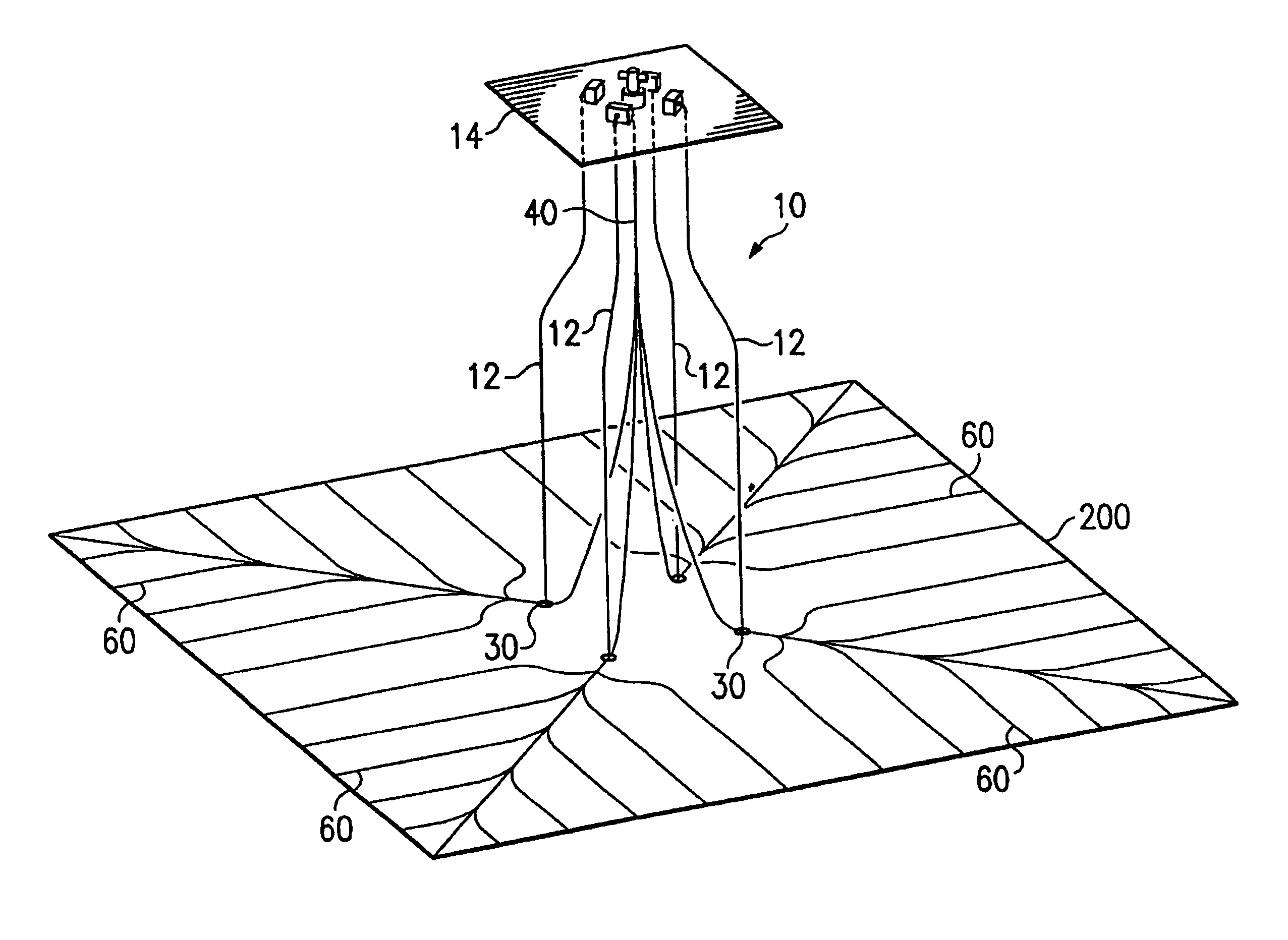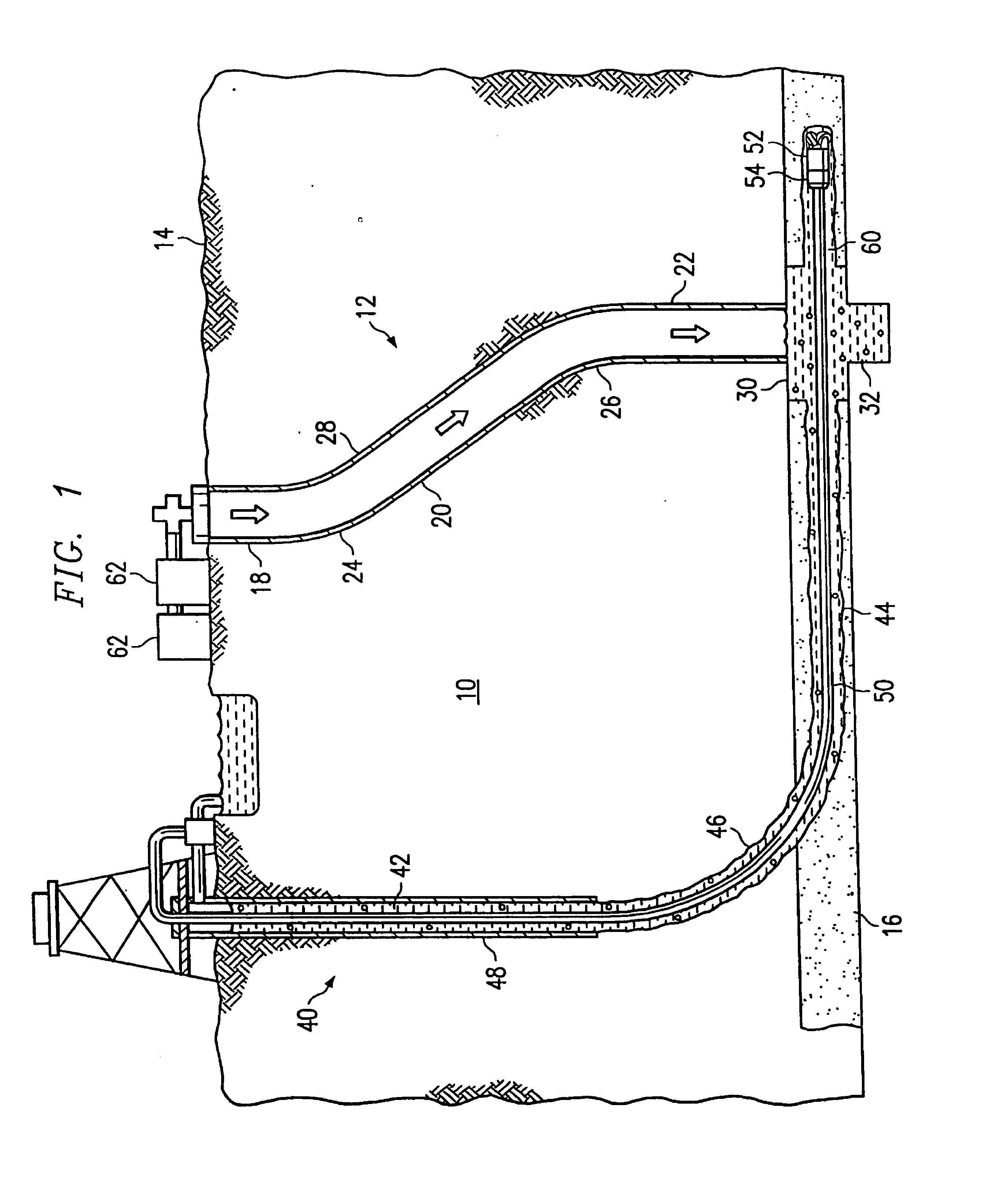Method and system for accessing a subterranean zone from a limited surface area
a subterranean zone and limited surface area technology, applied in the direction of directional drilling, drinking water installation, borehole/well accessories, etc., can solve the problems of limited production and use of methane gas from coal deposits, relatively shallow depth of coal seams, and frustrated more extensive development and use of methane, so as to reduce the time needed for degasification of the seam, reduce the need for surface area and underground equipment and activities , the effect of reducing the time needed for shutdown
- Summary
- Abstract
- Description
- Claims
- Application Information
AI Technical Summary
Benefits of technology
Problems solved by technology
Method used
Image
Examples
Embodiment Construction
[0025]FIG. 1 is a diagram illustrating a system 10 for accessing a subterranean zone from a limited surface area in accordance with an embodiment of the present invention. In this embodiment, the subterranean zone is a coal seam. However, it should be understood that other subterranean formations and / or other low pressure, ultra-low pressure, and low porosity subterranean zones can be similarly accessed using the system 10 of the present invention to remove and / or produce water, hydrocarbons and other fluids in the zone, to treat minerals in the zone prior to mining operations, or to inject, introduce, or store a gas, fluid or other substance into the zone.
[0026]Referring to FIG. 1, a well bore 12 extends from the surface 14 to a target coal seam 16. The well bore 12 intersects, penetrates and continues below the coal seam 16. In the embodiment illustrated in FIG. 1, the well bore 12 includes a portion 18, an angled portion 20, and a portion 22 disposed between the surface 14 and th...
PUM
 Login to View More
Login to View More Abstract
Description
Claims
Application Information
 Login to View More
Login to View More - R&D
- Intellectual Property
- Life Sciences
- Materials
- Tech Scout
- Unparalleled Data Quality
- Higher Quality Content
- 60% Fewer Hallucinations
Browse by: Latest US Patents, China's latest patents, Technical Efficacy Thesaurus, Application Domain, Technology Topic, Popular Technical Reports.
© 2025 PatSnap. All rights reserved.Legal|Privacy policy|Modern Slavery Act Transparency Statement|Sitemap|About US| Contact US: help@patsnap.com



